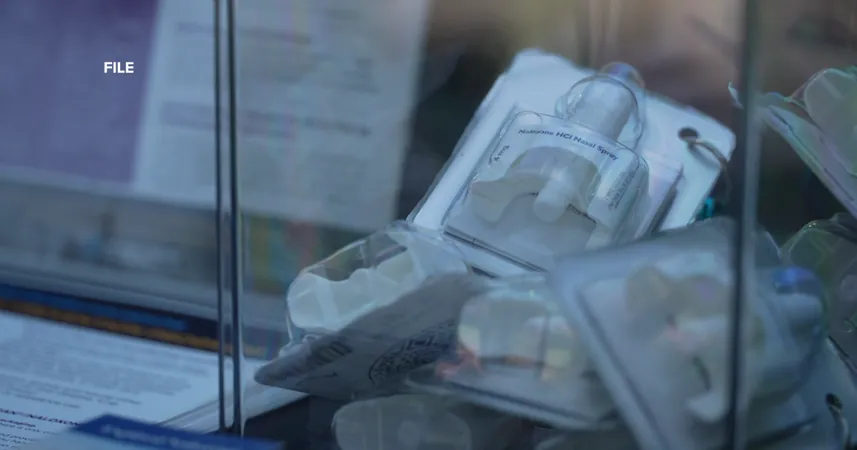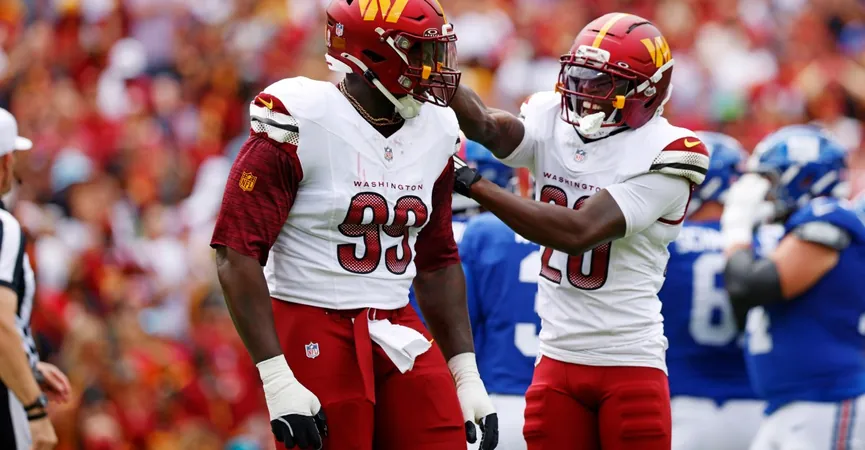
Life-Saving Moment: Naloxone Rescue at Denver Health Exhibit Highlights Opioid Crisis
2025-09-06
Author: Lok
Tragic Reality of the Opioid Crisis
The opioid epidemic is devastating communities across the nation, particularly affecting Black, Hispanic, and Asian populations. A recent study by Denver Health emphasizes a crucial concern: these groups are significantly less likely to have access to naloxone, the vital medication that can reverse the effects of an opioid overdose.
A Life Saved at Denver Public Library
This stark reality was vividly illustrated during an exhibit at the Denver Public Library aimed at dismantling the stigma surrounding substance use. On a seemingly ordinary day, a library patron fell unconscious after apparently falling asleep.
Brooke Bender, the administrative director at Denver Health's Center for Addiction Medicine, recounts, �22When we noticed the unusual sound of snoring, we checked on him, but soon it became apparent that he wasn’t responding at all.�22 In quick response, Bender and peer-support staff retrieved naloxone from their booth.
�22It was a life-saving moment,�22 Bender said. �22We administered naloxone and successfully brought him back. It was profound to witness how our outreach efforts turned into a literal rescue.�22
Why Naloxone Accessibility is Crucial
What Bender highlights is a simple yet powerful truth: anyone can carry naloxone, regardless of their personal history with substances. �22There’s no shame in having naloxone available. It’s an essential part of being prepared to support someone in need,�22 she emphasized.
For those unfamiliar, administering naloxone is user-friendly and doesn’t require medical expertise. Bender described the process: �22It comes in an easy-to-open package—just spray it into the nostril of the person lying down, wait a few minutes, and observe for any response.�22 She urges people not to discard expired naloxone, noting that it may still be effective when needed.
Addressing Disparities in Naloxone Access
Research underscores ongoing barriers to naloxone accessibility. Dr. Joshua Black from Rocky Mountain Poison and Drug Safety pointed out that disparities continue despite awareness initiatives. �22It’s not just about translating materials; culturally relevant engagement is essential,�22 he stated, emphasizing that outreach must resonate with specific communities.
Stigma remains a significant barrier, discouraging individuals from carrying naloxone or seeking help. Black advocates for moving naloxone distribution into community settings where people feel comfortable.
The Importance of Preparedness and Community Support
Beyond emergency situations, Denver Health aims to foster a culture of preparedness. �22Being ready and knowing how to use naloxone can make a critical difference,�22 Bender said, noting that repetitive practice with the steps can ease panic during a crisis.
Moreover, peer support plays a vital role. Bender remarked on the value of lived experience, stating, �22Those who’ve faced these situations can guide others on how to respond effectively. We’re proving that these strategies work, but access must be expanded!�22


 Brasil (PT)
Brasil (PT)
 Canada (EN)
Canada (EN)
 Chile (ES)
Chile (ES)
 Česko (CS)
Česko (CS)
 대한민국 (KO)
대한민국 (KO)
 España (ES)
España (ES)
 France (FR)
France (FR)
 Hong Kong (EN)
Hong Kong (EN)
 Italia (IT)
Italia (IT)
 日本 (JA)
日本 (JA)
 Magyarország (HU)
Magyarország (HU)
 Norge (NO)
Norge (NO)
 Polska (PL)
Polska (PL)
 Schweiz (DE)
Schweiz (DE)
 Singapore (EN)
Singapore (EN)
 Sverige (SV)
Sverige (SV)
 Suomi (FI)
Suomi (FI)
 Türkiye (TR)
Türkiye (TR)
 الإمارات العربية المتحدة (AR)
الإمارات العربية المتحدة (AR)